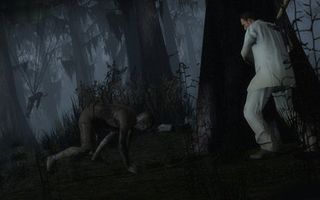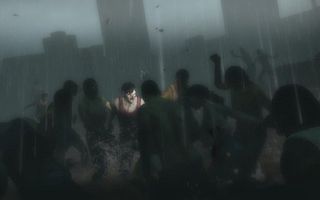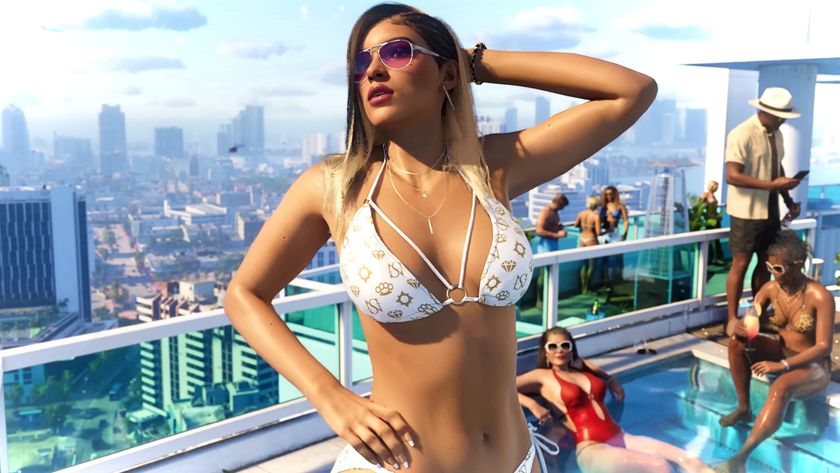Left 4 Dead 2 – dev interview
Chet Faliszek shows us around his rock 'n' roll carnival of death
Where did the New Orleans setting come from?
I think quite a few people came up with the idea of swamps. It grew from there to New Orleans. We had the idea that the different cities of the world are not all dug-in fending off the zombie apocalypse. They’re all at different stages, and we’re trying to explore that.
What can you tell us about the different campaigns?
There’s The Parish, which is the New Orleans French Quarter. We’ve shown the beginning of Swamp Fever. The swamp is a very creepy area. I’d lived in New Orleans for a little bit, and I think people were surprised how much stuff is actually in the swamp. It’s not just trees and moss and water. There’s a lot of weird things, so it ends up being this cool place with little villages along your route.
One of the other ideas we were really excited about was Dark Carnival, the idea of going to an amusement park. It became an issue of ‘what level of detail do we give you to interact with that amusement park?’ So you can turn on some rides, actually ride a ride. You can play some of the games and they’re tied into the achievements. We wanted this really weird world that’s off the main path of Left 4 Dead. It’s the oddest finale we’ve ever done.
(SPOILERS) How so?
There’s going to be a big stadium at the end where a band that used to be famous is going to play. Classic rock guys. You have to set off a finale of a classic rock show. Get up on the stage, do a lot of rocking out to alert the helicopter to rescue you. You’ll set off fireworks, there’s a light show. You can go up to the microphone on the stage and anything your character says is amplified out into the world.
Sign up to the 12DOVE Newsletter
Weekly digests, tales from the communities you love, and more

Does a finale like that have a specific team that works on it?
In that case it was a level designer, Dario Casali, who started working in the area. Then he started talking with some other people. We had some ideas about trains in that finale. It’s this iterative process of a smaller group. We have this overall cabal – that’s what we call our teams – and that cabal will be 55 or 60 people, and then we have smaller cabals that we’ll break off into that tackle small projects. Each finale gets a smaller cabal where we talk about how the story, art, sound and gameplay elements work in there.
Left 4 Dead 2’s new maps have alternate routes the AI Director can open up. How do you stop this becoming confusing for players?
One of our first thoughts on this was: the best thing for replayability is a random map. But it ends up exhausting for the player. You want some things you know, because otherwise you’re always being reactive, and we find players want to be strategic. They want to think about it as they’re playing – be able to go, “Oh my God, that’s happening there, we should run back here.” With that in mind we’ve balanced it, where only sections of certain maps play differently each time. And that’s based on how you’re doing. The Director’s deciding ‘should I make the path longer, shorter, or a little bit more difficult?’
People loved Bill, Louis, Francis and Zoe. Can you tell us one thing you love about each of the new characters?
Ellis is non-stop enthusiasm. He’ll be excited about things. Like at the end of Dark Carnival, he’ll be excited that he gets to go on a rock stage, sing along to one of the Midnight Rider songs, while at the same time killing zombies. He’s super-excited about everything – he doesn’t let things get him down.
Coach is this no-nonsense guy. Bad stuff happens, the zombie apocalypse is just more bad stuff... He’s got some great call-outs, dealing with the shitty world that he’s in.
Nick and Rochelle share a trait that I like in both of them. They have some dark sarcasm that they’ll pull out at times. Particularly Nick, when he’s getting a little sick of people not pulling together, not doing what they need to do, he’ll definitely be biting a little bit more than you’ll have seen in L4D1. Rochelle is a northern girl, so occasionally she’ll be a little bit confused by what’s going on with the southern folk, and that’s a fun trait, especially in the first couple of campaigns where they’re getting to know each other.

How did you create these characters?
We need the setting first, and from there we work out the characters with a bunch of artists and a bunch of writers, everybody brainstorming, feeding off each other. The Coach, he was words first, then drawings. Nick, the gambler, went the other way: he was a picture first, then words. It’s a really long back and forth process where we not only look at them individually but as groups. What happens if you have three women and a guy in a group? If you have a police officer and a fireman in a group, with a school teacher? Not only types of people, but sizes and profiles and vocal ranges.
Do you look at those groups from a storytelling point of view, or a player psychology point of view?
It’s both at once, which is why the characters take the longest to do. When you start building the group, you see interesting dynamics where people play off each other, or can be a little contrary... But it’s a group that’s got to work together. We’ll first cull characters we don’t like on their own, and then we’ll cull people who just don’t work in those groups.
How many different characters do you go through?
I’d say if you include all the variations – Rochelle had the most – we’re in the hundreds. With drawings, those we’d planned to flesh out further, that’s twenty to thirty.
What was there about Rochelle that made her so difficult to pin down?
Being the one female character, she has to stand out. She’s going to have to carry the ball a lot more for being the girl. There’s the technical side – how’s her hair going to look best, can we do this kind of hair? But also how do people react to her? We had people who we showed pictures to, testing their reaction. Nick was the one we iterated the least. I think he went from concept to game in a one-shot.












